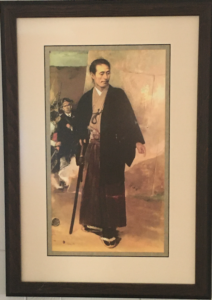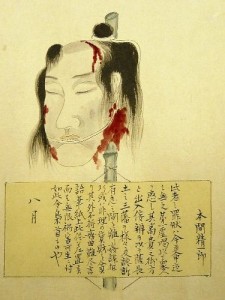
Samurai Revolutionwill make a riveting miniseries, co-narrated by Katsu Kaishu, the “shogun’s last samurai,” who is the focus on the book, and his political ally and confidant, Ernest Satow.
Interested producers and media professionals are urged to contact Romulus Hillsborough under the “Contact the Author” tab in the menu above.
“Hillsborough’s prose is cinematic and intense.” The Wargamer
“Hillsborough deserves high praise for successfully combining high drama… with meticulous scholarship.” The Daily Yomiuri
“Hillsborough does a great job of elucidating the complex customs that ruled Edo Period life and politics.“ The Japan Times
“[an] absorbing if sometimes gruesome reading for anybody who wishes to understand the chaos in which the shogunate was finally engulfed, not least for its study of significant figures on various sides of the struggle . . . .” Times Literary Supplement
[About the above portrait of Katsu Kaishu: The overthrow of the Bakufu in 1868 sparked a contained civil war that threatened to spread throughout the country, endangering Japan’s sovereignty. To avoid catastrophe, Kaishu, as commander in chief of the fallen shogun’s still formidable military, negotiated an eleventh-hour peace, including the surrender of the shogun’s castle, with the commander of the Imperial Army. For that he was considered a traitor by many in the Tokugawa camp. Behind him is a stonewall of the castle, to the left of which is a fellow Bakufu samurai, sword drawn, as if ready to attack him. The portrait is based on a photograph taken at the British Legation in Yokohama by Ernest Satow, secretary to the British minister to Japan, around the time the castle was surrendered. “I was so very sleepy at the time,” Kaishu recalled years later. “But they dragged me over there. Satow took it, because, as he said, ‘You’re going to be killed.’”]


